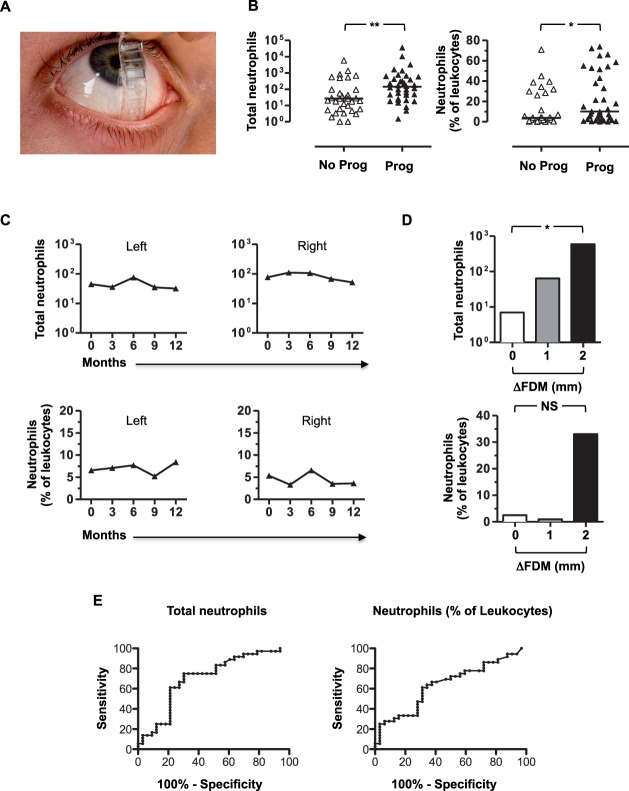Figure 4.
Neutrophil numbers and percentage are significantly higher among eyes that develop lower fornix shrinkage in OcMMP, are maintained over time; and in clinically uninflamed eyes, the number of neutrophils correlates with the degree of central lower fornix shrinkage in OcMMP. Assessment of central lower fornix with a fornix depth measurer (FDM) is shown in (A). Comparisons between the conjunctival CD45INTCD11b+CD16+CD14− neutrophil numbers and percentage of leukocytes were undertaken in a cohort of 35 patients with OcMMP by the Mann-Whitney U test (NS, not significant; *P = 0.01–0.05; **P = 0.001–0.01). The median neutrophil numbers and percentage are shown for eyes that did not (No Prog) and did progress (Prog) (B). Changes over time were calculated by using a generalized estimating equation (GEE) at 0, 3, 6, 9, and 12 months follow-up for right and left eyes. This is represented schematically for the median neutrophil numbers over time ([C] left and right columns, respectively). The number and percentage of neutrophils were compared by ΔFDM (the change in central lower fornix measured in millimeters between 0 and 12 months; FDM at 12 months − FDM at 0 months) (D). ROC curve analysis for neutrophil numbers and percentage are shown in (E) (n = 69 eyes). Comparisons were undertaken by the Jonckheere-Terpstra test (NS, not significant; *P = 0.01–0.05). FDM, fornix depth measurer.

